Looking to freshen up your carpets without harsh chemicals or expensive products? Baking soda might be the solution you’ve been looking for.
We explore what baking soda is, how it works as a cleaner, and why it’s a great option for cleaning carpets. We’ll also discuss the benefits of using baking soda, how to use it effectively, and any potential risks or side effects to be aware of.
So, does baking soda really help clean carpets? Let’s find out!
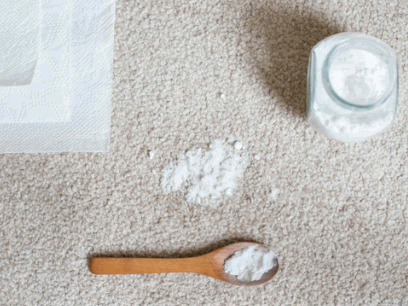
What Is Baking Soda?
Baking soda, also known as sodium bicarbonate, is a versatile white powder commonly used in baking and household cleaning.
Its chemical composition includes sodium, hydrogen, carbon, and oxygen atoms, making it an alkaline substance with numerous practical applications.
In baking, baking soda reacts with acidic components like buttermilk or vinegar to produce carbon dioxide gas, which helps the dough rise and creates a light, fluffy texture in baked goods.
In cleaning, its abrasive nature and mild alkalinity make it an effective agent for cutting through grime, removing odors, and brightening surfaces without being harsh on the skin or the environment.
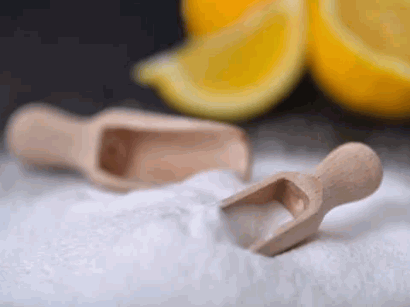
How Does Baking Soda Work As A Cleaner?
Baking soda acts as a mild abrasive and deodorizer, making it an effective cleaner for various surfaces and materials.
When baking soda is mixed with water, it forms a gentle cleaning paste that can be used on sinks, countertops, and even delicate surfaces like cookware without causing damage. Its natural alkaline properties help to break down dirt and grime, while its abrasive texture aids in scrubbing away tough stains.
Additionally, baking soda is renowned for its ability to neutralize odors by absorbing and eliminating foul smells rather than just masking them. From removing lingering odors in the fridge to freshening up carpets, this versatile ingredient can tackle a wide range of unpleasant scents.
Discover: How To Clean Dirty Stairs Carpet
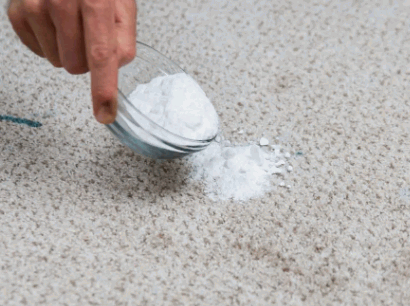
What Makes Baking Soda A Good Carpet Cleaner?
Baking soda’s absorbent nature and odor-neutralizing properties make it an ideal carpet cleaner, especially for removing stains and freshening up carpets without harsh chemicals.
In terms of carpet cleaning, baking soda stands out due to its ability to effectively absorb moisture and lift dirt from deep within the carpet fibers. Its natural alkaline properties enable it to tackle tough stains like pet accidents or spilled drinks.
Unlike synthetic cleaning agents, baking soda is gentle on the environment and safe for use around pets and children. Its eco-friendly composition makes it an attractive choice for those seeking sustainable cleaning solutions.
Along with its cleaning prowess, baking soda acts as a natural deodorizer, eliminating unpleasant odors and leaving carpets smelling fresh and clean. This multi-functional aspect sets it apart as a versatile and cost-effective cleaning agent for carpet maintenance.
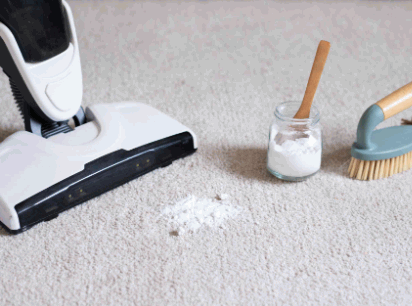
What Are The Benefits Of Using Baking Soda To Clean Carpets?
Using baking soda to clean carpets offers several advantages, including non-toxicity, cost-effectiveness, and efficient odor and stain removal.
Moreover,
- Baking soda is a versatile product that is gentle on carpets and safe for pets and children. Its abrasive nature helps to lift dirt and grime from carpet fibers without causing damage, making it an ideal solution for regular maintenance.
- The affordability of baking soda makes it an attractive option for budget-conscious individuals looking to freshen up their carpets without breaking the bank.
- Whether you’re dealing with pet odors or food spills, or just want to freshen up your space, baking soda is a reliable and effective cleaning agent.
Non-Toxic And Safe For Pets And Children
One of the key benefits of using baking soda to clean carpets is its non-toxic nature, making it safe for both pets and children in the household.
Unlike harsh chemical cleaners that can pose risks to health, baking soda offers a gentle yet effective way to maintain a clean environment.
Its non-toxic properties are particularly crucial when considering the well-being of pets and children, who may come into close contact with treated surfaces.
By opting for safe cleaning products like baking soda, you can create a healthier living space without compromising on cleanliness.
Inexpensive And Easily Accessible
Another advantage of baking soda as a carpet cleaner is its affordability and widespread availability, making it a cost-effective cleaning solution for households.
Due to its economic benefits, baking soda is a popular choice for those looking to maintain clean carpets without breaking the bank. Whether used independently or as part of a DIY carpet cleaning solution, baking soda offers a budget-friendly option for individuals seeking cost-effective ways to tackle carpet stains and odors.
The accessibility of baking soda in grocery stores, supermarkets, or even online platforms ensures that households can easily replenish their cleaning supplies whenever needed, without the hassle of searching for specialized products or spending exorbitant amounts of money.
Effective At Removing Odors And Stains
Baking soda’s efficacy in eliminating odors and stains from carpets is a key advantage, as it tackles tough cleaning tasks without leaving residue or damaging fibers.
Its natural absorption properties make it a versatile and cost-effective solution for home cleaning. Sprinkling a thin layer of baking soda on a carpet before vacuuming can help lift and neutralize odors, leaving the room smelling fresh. Mixing baking soda with water to create a paste can effectively treat tough stains like pet urine or spilled beverages.
Not only does baking soda remove unwanted odors and stains, but it also helps in maintaining the quality of the carpet fibers as it is a gentle yet efficient cleaning agent. Regular use of baking soda can prolong the lifespan of carpets, keeping them looking clean and fresh for longer durations.
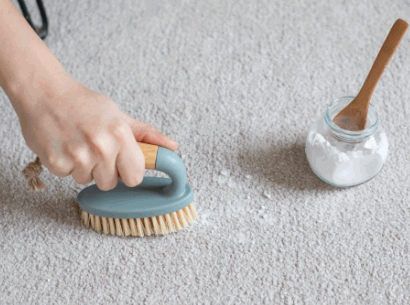
How To Use Baking Soda To Clean Carpets
To effectively clean carpets using baking soda, follow a simple process that involves vacuuming, sprinkling the powder, allowing it to absorb, and then vacuuming again for a fresh finish.
After vacuuming the carpet thoroughly, take your baking soda and sprinkle a generous amount over the affected areas. Use a brush or your fingers to gently work the powder into the carpet fibers, making sure it reaches deep down to eliminate any odors.
Let the baking soda sit for at least 15-30 minutes. This will give it enough time to absorb moisture and odors trapped in the carpet. You may also leave it overnight for more stubborn stains.
Once the waiting period is over, vacuum the carpet again to remove the baking soda along with the dirt and odors it has absorbed. Make sure to go over the area multiple times to ensure thorough cleaning.
Step 1: Vacuum The Carpet
Begin the carpet cleaning process by thoroughly vacuuming the carpet to remove surface dirt and debris before applying baking soda for deeper cleaning.
When preparing the carpet for the baking soda treatment, make sure to go over the entire surface meticulously. Pay extra attention to corners, edges, and areas with heavy foot traffic where dirt tends to accumulate.
It’s essential to invest time in this initial vacuuming step as it sets the foundation for the effectiveness of the baking soda treatment. The more dirt and debris you can remove beforehand, the better the baking soda will be able to penetrate into the carpet fibers and eliminate lingering odors.
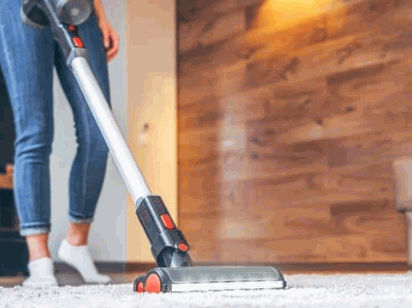
Step 2: Sprinkle Baking Soda On The Carpet
Evenly distribute baking soda across the carpet surface, focusing on areas with stains or odors for targeted cleaning and deodorizing effects.
When applying baking soda to your carpet, it’s essential to ensure that the powder is spread evenly to maximize its effectiveness. Using a sieve or a shaker can help achieve a uniform distribution, preventing clumps that may hinder its cleaning properties.
Target problem areas such as high-traffic zones or spots where pets frequent to tackle tough stains and lingering odors. Allow the baking soda to sit for at least 15-30 minutes to let it absorb moisture and odor-causing particles before vacuuming.
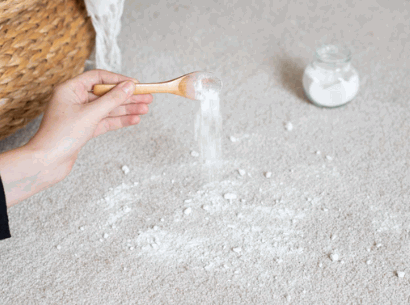
Step 3: Let It Sit And Absorb
Allow the baking soda to sit and absorb into the carpet fibers, enabling it to neutralize odors, lift stains, and freshen the carpet effectively.
Baking soda is a versatile and cost-effective cleaning agent that has been used for generations due to its remarkable ability to tackle a variety of cleaning tasks. By allowing it to work its magic on your carpet, you are harnessing its natural deodorizing properties and stain-lifting capabilities. The longer you let the baking soda sit, the better it can penetrate deep into the fibers, ensuring that it effectively absorbs odors and removes tough stains.
Step 4: Vacuum Again
After the baking soda has had time to work, vacuum the carpet once more to remove the powder along with the absorbed odors, dirt, and debris, revealing a refreshed and clean surface.
Ensure that the vacuum cleaner is empty or has a fresh bag to maximize suction power during this final step.
Run the vacuum over the entire carpet surface in both directions to capture all traces of the baking soda and any remaining particles.
Focusing on heavy traffic areas and corners is crucial for achieving an evenly cleaned result.
Check the filter or bag periodically to avoid clogs and maintain optimal cleaning efficiency throughout the process.
Admire your revitalized carpet, free from unwanted odors and looking as good as new.
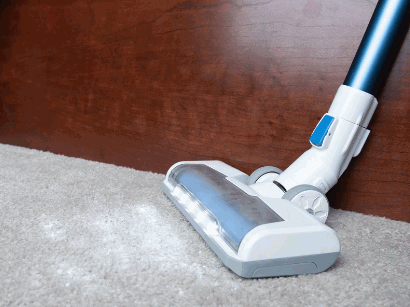
Are There Any Risks Or Side Effects Of Using Baking Soda On Carpets?
While baking soda is generally safe for carpet cleaning, there are potential risks such as discoloration and difficulty in complete removal that users should be aware of.
When using baking soda on carpets, it’s crucial to keep in mind that its abrasive nature can lead to discoloration, especially on delicate or colored carpets. In some cases, the residue left behind after application may be challenging to completely remove, causing the carpet to appear dirty or feel gritty. Excessive use of baking soda can seep deep into the carpet fibers, making it harder to vacuum out completely, which might result in long-term issues.
May Cause Discoloration Or Bleaching
One risk of using baking soda on carpets is the potential for discoloration or bleaching, especially when applied in excess or left for prolonged periods.
While baking soda can be an effective deodorizer and cleaner for carpets, it is essential to be cautious about the amount and duration of its application.
Preventive measures such as testing a small inconspicuous area before widespread use can help avoid potential discoloration issues. Promptly removing the baking soda after allowing it to sit for a short period can mitigate the risk of damage. Regular vacuuming and proper ventilation post-application can also aid in preventing any unwanted effects on your carpet’s color and texture.
Can Be Difficult To Remove From Carpet
Removing baking soda residue from carpets can pose a challenge, as the fine powder particles may cling to fibers and require thorough vacuuming for complete extraction.
One common mistake people make is not allowing sufficient time for the baking soda to settle and do its job before attempting removal. It’s essential to let it sit for at least 15-20 minutes to absorb odors and stains effectively.
Gently rubbing the affected area with a soft-bristled brush prior to vacuuming can help loosen the residue from the carpet fibers. For stubborn residues, a mixture of white vinegar and water can be sprayed onto the affected area to break down the baking soda particles before vacuuming.
Conclusion: Does Baking Soda Really Help Clean Carpets?
In conclusion, baking soda can be a valuable ally in carpet cleaning when used correctly and with caution, offering a natural and effective solution for freshening and maintaining carpet cleanliness.
Its gentle abrasive nature helps to lift dirt and odors from carpet fibers, while its alkaline properties neutralize acidic substances, such as pet urine or vomit, leaving the carpet smelling fresh and looking rejuvenated.
Its affordability and eco-friendly profile make it an attractive option for those looking for a non-toxic cleaning alternative.
It’s important to note that excessive use of baking soda or failure to thoroughly vacuum it up can lead to residue buildup and potential discoloration of carpets, emphasizing the need for proper usage and adequate ventilation during application.
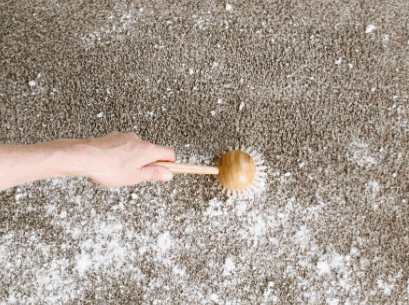
Yes, With Proper Use And Precautions
When used with proper care and adherence to precautions, baking soda can indeed help in cleaning carpets effectively, ensuring a fresh and odor-free environment.
One of the key benefits of using baking soda for carpet cleaning is its natural ability to absorb odors and moisture, leaving the carpet refreshed. Its alkaline nature also helps in breaking down stains and dirt particles, making them easier to remove during vacuuming or washing. When sprinkled evenly and left for a sufficient amount of time, baking soda can penetrate deep into carpet fibers, targeting hidden dirt and smells.
